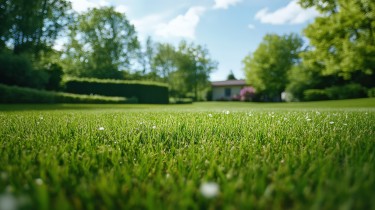1. Pruning Plants
- Proper pruning is very important to the health longevity and appearance of plant material.
- Prune most shrubs at least 2 times per year. Hand pruning is done with pruning shears and gives the plants a more natural look. (This technique is usually more time-consuming.) “Shearing” is a pruning technique that gives the shrubs a neat uniform appearance and is done with a machine.
- Prune back perennials in the late winter before new growth appears.
Tip: Remember, the timing of pruning is critical. Prune flowering shrubs after blooming to prevent removing buds for new blooms.
2. Fertilizing Plants
- Fertilizing plants promotes vigorous root growth, healthier foliage and more abundant blooms. Evergreens, flowering shrubs and ornamental plants should be fertilized 2 times per year.
Tip: Use a time-released, granular fertilizer for best results.
3. Mulching Plants
- Clean, treated, double shredded hardwood mulch is recommended.
- Apply mulch to all landscaped beds and trees at least 1 time per year. Only 3” of mulch is required in all landscaped areas. Mulch should be installed less around the base of plants and trees. (Never apply or have more than 3” of mulch in any landscaped area)
- Mulch provides moisture retention for plants to thrive and slows water evaporation.
- Mulching beds reduces weed growth. Weeds can be detrimental to plant health because they compete for water, nutrients and ground space to expand.
- Mulch adds aesthetic beauty and health to your landscape.
Tip: Apply a bed pre-emergent product under the mulch prior to new mulch installation each year to reduce weed growth. Pull weeds as they emerge to prevent further pollinating of additional weeds.


